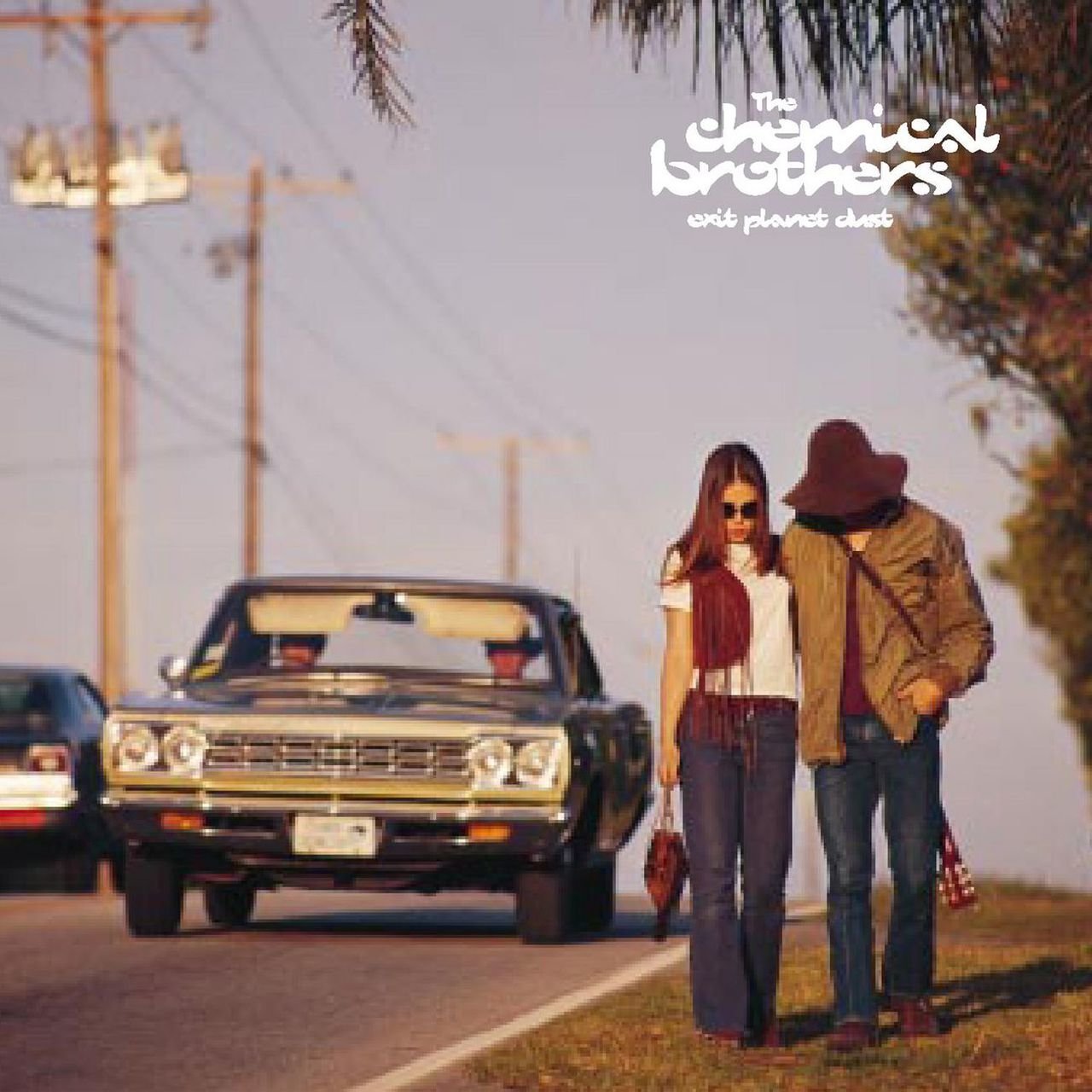History and Development
The late 90s bore witness to an electronica explosion. The rave scene thrived in darkened warehouses, festivals echoed with synthetic beats, and at the heart of this maelstrom were The Chemical Brothers. Comprising of Tom Rowlands and Ed Simons, the duo from Manchester carved a path for themselves with their ground-breaking debut album, “Exit Planet Dust.”
Formed in 1989 under the moniker “The Dust Brothers,” their early influences were hip-hop and the nascent acid house scene. This was evident in their early live sets at “Naked Under Leather,” their club night in Manchester. As they evolved, they faced a legal challenge from the original U.S. Dust Brothers, leading to their rebranding as “The Chemical Brothers.” This was just a stepping stone to “Exit Planet Dust,” a testament to their relentless passion for reinventing dance music.
The recording process itself was an eclectic mix of sampling, live instrumentation, and digital synthesis. Using an Akai sampler and a Roland drum machine, among other equipment, they created intricate layers of sound that resonated with both club-goers and casual listeners.
Track Listing
- Leave Home – A powerful opener, “Leave Home” is an ode to their roots. The track’s pulsating beats are accompanied by vocal samples that command, “The brothers gonna work it out,” setting the stage for the entire album.
- In Dust We Trust – A direct nod to their initial moniker, the track blurs the line between house and breakbeat, showcasing the duo’s versatility.
- Song to the Siren – Recorded live at Sabresonic nightclub, this track engulfs listeners with its mesmerizing rhythm and transcendent aura.
- Three Little Birdies Down Beats – Melding breaks with ethereal soundscapes, this piece exemplifies The Chemical Brothers’ ability to tell stories without words.
- Fuck Up Beats – Short and punchy, this number is a heady concoction of hip-hop influences and distorted vocal samples.
- Chemical Beats – A standout track that predates the album, its iconic beats and basslines make it a definitive Chemical Brothers anthem.
- Chico’s Groove – Delving deeper into experimentation, this song’s delicate balance of flute samples and driving beats is captivating.
- One Too Many Mornings – This down-tempo track offers a breather, reminiscent of early morning after-parties with its mellow beats and hushed vocals.
- Life Is Sweet – Featuring Tim Burgess, the track beautifully melds rock and electronica, hinting at the duo’s future collaborations with notable rock artists.
- Playground for a Wedgeless Firm – Intricate, detailed, and mysteriously titled, it showcases their talent for blending diverse sonic elements.
- Alive Alone – Featuring Beth Orton, this track is a melancholic end to the album. Its haunting lyrics and ambient tones leave listeners contemplative.
Significant Reviews
“Exit Planet Dust” wasn’t just an album; it was a cultural phenomenon. Critically, it was lauded for its innovation and genre-blending capabilities. NME called it “a psychedelic whirlwind of danceable tunes,” while Rolling Stone admired its “sonic diversity, bridging the gap between rock and rave.”
Pitchfork, known for its often stringent reviews, praised the album’s innovative approach to big-beat electronica. The way The Chemical Brothers seamlessly fused rock samples with club beats was nothing short of revolutionary at the time.
Dance music aficionados embraced it as it reshaped the rave scene, while rock enthusiasts, often wary of electronic music, found elements they could resonate with. In a genre that’s sometimes criticized for lacking emotion or narrative, “Exit Planet Dust” delivered both in droves.
Key Themes
“Exit Planet Dust” was more than just a collection of tracks; it was a narrative journey. The album’s title itself alludes to escape, a departure from the ordinary into the unknown.
- Nostalgia vs. Futurism – The tracks consistently play between reminiscing about the past and embracing the future. While “Leave Home” is a nod to their origins, “Chemical Beats” thrusts listeners into the future of dance music.
- Organic vs. Synthetic – Live instruments intertwine with synthesized sounds, blurring the boundaries between the organic and the digital. This duality challenges the notion of what constitutes ‘real’ music.
- Unity and Community – The repeating line “The brothers gonna work it out” emphasizes unity. It’s a call to the dance community to come together, to celebrate, and to create.
Version/Release History
Upon its release in 1995, “Exit Planet Dust” was available in CD, cassette, and vinyl formats. The iconic cover, a black and white image of the duo overlaid with colorful chemical structures, became instantly recognizable.
In 2008, a deluxe edition was released, marking its continued relevance in the music landscape. This version contained additional remixes and a detailed booklet offering insights into the album’s creation.
The digital age saw “Exit Planet Dust” made available on streaming platforms, with some platforms offering exclusive remastered tracks.
For vinyl enthusiasts, 2015 witnessed a limited-edition repress on clear vinyl, underscoring its lasting appeal to both old fans and new.
Similar Albums
“Exit Planet Dust” set a precedent, but it wasn’t alone in its quest to redefine music.
- Prodigy’s “The Fat of the Land” – Released two years after “Exit Planet Dust”, it offered another big-beat masterpiece, filled with anthems like “Firestarter” and “Breathe.”
- Fatboy Slim’s “You’ve Come a Long Way, Baby” – A tapestry of catchy hooks, memorable samples, and floor-filling beats, it shared the same spirit of dance-floor innovation.
- Daft Punk’s “Homework“ – While more house-centric, it too played with blending genres, delivering classics like “Around the World” and “Da Funk.”
- Underworld‘s “Dubnobasswithmyheadman” – Another seminal work, it married spoken-word poetry with ambient techno to create an unforgettable soundscape.
The late 90s were a golden age for electronica, and “Exit Planet Dust” proudly stands among the era’s defining works, a testament to The Chemical Brothers’ genius.

